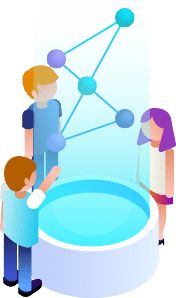

Setting goals and objectives is critical to the success of any organization. However, it’s not enough to simply set goals; you need to have a strategic plan in place to achieve them. That’s where OKR’s (Objectives and Key Results) come in. In this article, we’ll explore how OKR’s and goal management can help drive success in your organization.










Which is qualitative and defines what one wants to achieve
Which are quantitative and define how you will measure progress to achieve the objective.
Prioritize Objectives. Track Key Results. Align Teams, Stretch For Excellence
OKRs have helped lead us to 10X growth, many times over.
OKR is a goal management framework adopted by companies as a collaborative goal-setting tool. With an OKR Software, cascading goals are kept transparent and set the work cadence for the organization.
Make goals agile, dynamic and drive performance management with OKR Software that bridges the gap between strategy and execution.








By clearing the line of sight to everyone’s objectives,
OKRs expose redundant efforts and save time and money.~ John Doerr



Focus on prioritizing organizational goals that matter today.
Achieve organization wide alignment.
Drive agility through shorter goal periodicity.
Adopt data driven quantitative performance assessment.
Provide big picture to employees.

OKRs provides useful insights about what needs to be achieved and what’s happening within the organization towards those outcomes. It helps to track employee performance on a consistent basis and ultimately helps them stay aligned with the business goals. In other words, OKRs facilitate increased visibility of business goals.
With OKRs each employee is aware of what needs to be accomplished every week/month/quarter. Keeping the final objective in mind, each employee is inspired to work towards it and plan the work accordingly.
With clear priorities set-up, each employee aligns well to the company purpose and is more engaged and feels that their contribution matters thus resulting in proactive action and productive employees.
OKR allows you to make data-driven and informed decisions as the results are measurable and can be tracked frequently. Such progress also triggers on-going conversations facilitating timely course corrections and realignment.
OKR helps the team to line-up their objectives in sync with the organizational objectives thus eventually helping them to be more focused, aligned, and organized to drive the organization forward.
As you begin setting up OKRs, start by defining 3-5 key business objectives that you want to achieve during a specified time period. The objectives should be specific, measurable, achievable, and time-bound. These objectives help in designing actionable SMART Goals that help the business achieve desired outcomes.
Specify 3-4 key results under each objective. Remember key results are the primary activities that need to be accomplished to attain an objective.
OKR framework allows identification and documentation of activities that employees need to take to accomplish on a weekly and monthly basis to stay in-line with the overall business objectives.
It’s best to view Key Results at the end of the month or a quarter, you can review the OKRs to see for yourself how much have you accomplished and what you can improve on.
Objectives are ideally set for a year and should be reviewed on a yearly basis. Key Results being monthly/quarterly in nature should be reviewed and updated appropriately. The advantage of setting shorter Key Results enable businesses to adjust quickly in line with business requirements.
Make sure you skim through the progress of OKR every week, so you do not forget an OKR that was setup. Creating a weekly ritual can help your team ensure you are on track.
Having too many OKR can cause chaos within the teams because the focus is diverted towards many different activities. So, it is mandatory to prioritize 3-4 primary OKR that needs to be accomplished within a quarter or a year.
Failing to keep the bigger picture in mind leads to improper utilization of the resources. It is essential to have clear communication with the team leads to the role they play in a larger scheme of things and eventually the employees will understand how their tasks help achieve the team goals.